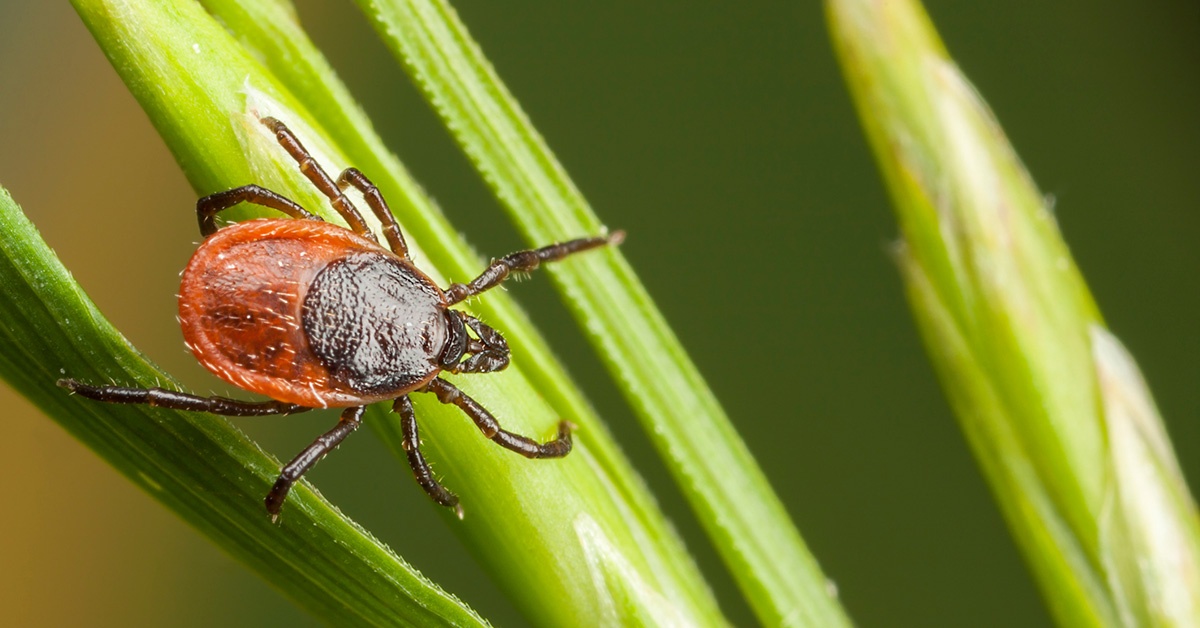As the weather finally warms up, Minnesotans are eager to get out and enjoy our state’s beautiful outdoors. But unfortunately, we’re not the only ones who venture out when the temperature rises; summer means tick season in Minnesota. Many ticks can carry bacteria, viruses and parasites that can harm humans, including those that cause Lyme disease and anaplasmosis.
Assistant Professor Jon Oliver with the University of Minnesota School of Public Health answers questions about the outlook for this year’s tick season in Minnesota, including how people can avoid ticks and what to do if they find one on themselves.

Q: Will there be a lot of ticks this year?
Prof. Oliver: It is always a good bet that there will be plenty of deer ticks in Minnesota in the spring and summer. Last year, despite drier than normal summer weather, the state saw fairly typical numbers of immature ticks. This year, those ticks will have grown to be adults or nymphs. Based on last year’s number, I expect we will have a fairly average year for deer ticks and that means there will be plenty of them around. A cold April may limit the number of adult ticks active in the early spring but those ticks will come out as soon as the weather warms up, especially as daytime temperatures exceed 60 degrees.
Q: What types of ticks are most common in Minnesota?
Prof. Oliver: Deer ticks (Ixodes scapularis) and American dog ticks (“wood ticks”; Dermacentor variabilis) are common in Minnesota and both commonly bite people and pets. Although both species can potentially transmit diseases, deer ticks are more concerning because they are often infected with the bacteria that cause Lyme disease. (For more on ticks in Minnesota, click here.)
Q: Where are ticks most prevalent?
Prof. Oliver: Deer ticks require a refuge with a high humidity level, such as the forest leaf layer, so they are most often found in forested areas. Deer ticks are spreading and becoming more common. They are now found in every forested county in the state. Even in prairie areas, deer can carry ticks to patches of forested habitat, so people should be vigilant for ticks after visiting any forested area in Minnesota. Adult deer ticks are active in the spring (April through June) and the fall (September through November) when temperatures are above freezing and there is no snow. Immature nymphs are considered more of a disease risk because they are smaller and harder to notice, so they often remain attached and feed for longer. They are mostly active in May through July in Minnesota.
Q: What can people do to avoid getting ticks on themselves and what should someone do if they find one?
Prof. Oliver: Tick-borne diseases are more easily prevented than cured. Insect repellents that contain DEET or other EPA-approved repellent chemicals are effective at repelling ticks. If you spend a lot of time in tick habitats, it may be worth treating a suit of clothes with permethrin, a repellent/insecticide that works on ticks. Tucking pants legs into your socks can help keep ticks on the outside of your clothes making them easier to spot. The bacteria that cause Lyme disease and other tick-borne diseases usually take hours to enter your body after a tick attaches to feed. Daily tick checks will greatly reduce your chance of getting Lyme disease even if you are bitten. (For more tips on preventing tick-borne diseases, click here.)
If you find a tick biting you:
- Use tweezers to grab the tick by its mouthparts where they enter your skin.
- Pull the tick straight off. Avoid crushing its body.
- After a tick bite, be mindful of your body’s health. If you develop a rash or flu-like symptoms, visit your doctor about the tick bite.
Q: What are you doing to advance research on ticks?
Prof. Oliver: With the goal of enhancing human health and reducing human exposure to tick-borne diseases, my research focuses on the interactions of ticks and the bacteria they carry, as well as the distribution of ticks on the landscape of the Upper Midwest. New pathogens are discovered relatively often in Minnesota’s deer ticks, and our lab is working to find out how and where new diseases arise.
One exciting new project we are working on aims to bring detection tools to the field for much more rapid identification and discovery of pathogens in ticks and rodents. Using an innovative mobile laboratory in the field, we can use these tools to detect pathogens within hours instead of days. We can also use the new tools to detect a full range of tick-borne pathogens at the same time, where previous tools could only detect one pathogen at a time. Testing this new surveillance system will be a major focus of our summer activities this year.

